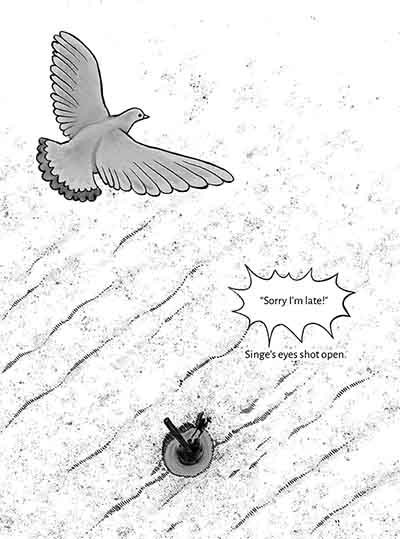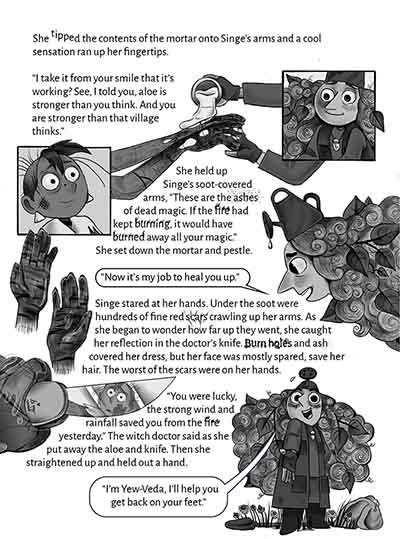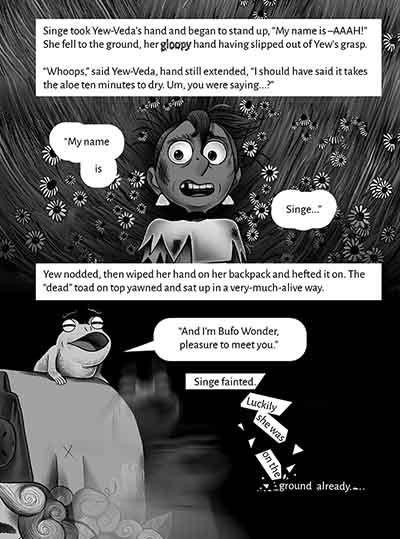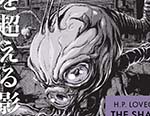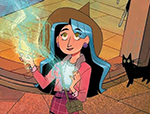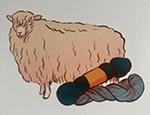There has always been a quiet confidence about Aminder Dhaliwal’s work, along with a sense of comfort that one is in the hands of a great storyteller. Consider her last book Cyclopedia Exotica about a community of cyclops living among us, which raised a lot of clever questions about society and discrimination without losing sight of an enjoyable narrative.
A Witch’s Guide to Burning is no different. It is a great story, wears its intelligence lightly, and manages to be both funny and poignant at the same time — a perfect choice for anyone who has loved Dhaliwal’s earlier work. One can tell that her preoccupations remain: voices of the marginalised, underdogs displaced by powerful forces and, as always, a woman’s place in the world. Carrying these queries on weakened shoulders is the protagonist ‘Singe’, a witch who has barely survived a burning.

This is an adventure story at heart, a quest for salvation that involves a series of trials, a lot of hairy situations, powerful spells, and a cast of unusual characters that weave in and out of Singe’s life as she tries to recover her lost magic as well as her understanding of who she is. We are told that she comes from a line of witches put to the stake by people who believe they have outlived their usefulness to society, which is an idea Dhaliwal has examined before, right from her first book. Singe must remember her name and find out what her magic is meant to do, while re-evaluating her role in society.
It’s interesting how Dhaliwal continues to share her work on Instagram, which is where this story first appeared, and where it was serialised for a few years before making its way to print. One supposes it must be like giving readers a peek at how her stories evolve, while gauging reactions to inform how she must continue them. It feels like a particularly smart move in this instance because of how some of the panels work as standalone set pieces. The humour comes from the camaraderie shared by Singe’s other protagonists, the witch-healer Yew-Veda and witch-turned-frog Bufo. As each chapter ends with a minor cliffhanger, it also allows Dhaliwal to experiment with playful interludes that sometimes list recipes for strange potions or explain how certain incantations work.
Singe’s physical journey with her healer—while being pursued by three demons named Disgust, Doubt, and Despair—is also a metaphorical one about the recovery of one’s soul. As Singe and her unlikely companions embark upon their quest, each in search of something to be fixed within themselves, they allow Dhaliwal to deploy allegorical hints about our own world and its obsession with, among other things, dubious notions of productivity.
It can seem like a bit much at times, given the many twists and meandering threads that unravel before a climax at Perish Lake, but this is when Dhaliwal’s use of typography becomes a welcome distraction. Words blur and fade, light up to illustrate fire, or dissipate across a page like the Smoke Witch made of ashes. There is a lot of love in these pages, and an obvious attention to detail.
A Witch’s Guide to Burning is that rare thing: a book that can be enjoyed at different levels by readers across generations. It’s hard to predict what Dhaliwal will choose to focus on next, but also easy to see that she believes in pushing boundaries while asking difficult questions of herself as well as her audience. That is no small accomplishment.
Aminder Dhaliwal (W/A) • Drawn & Quarterly, $27.95
Review by Lindsay Pereira





